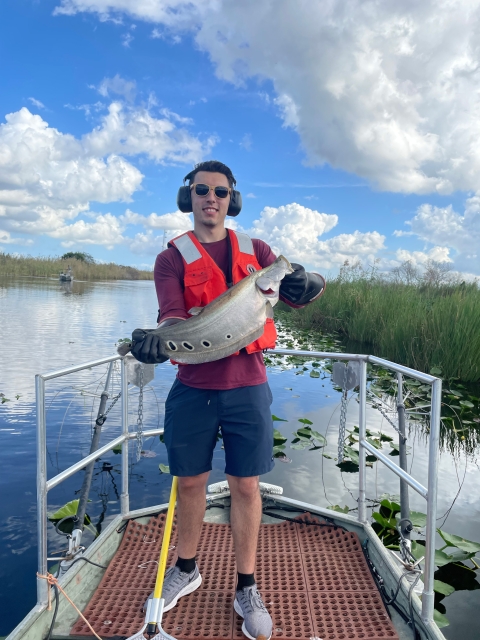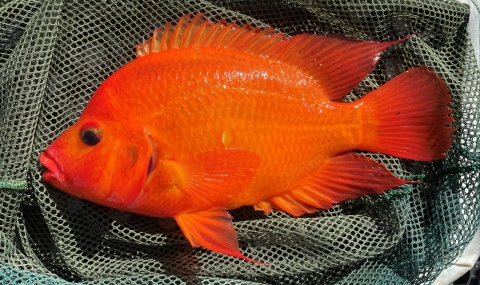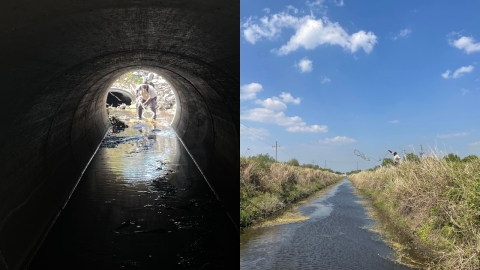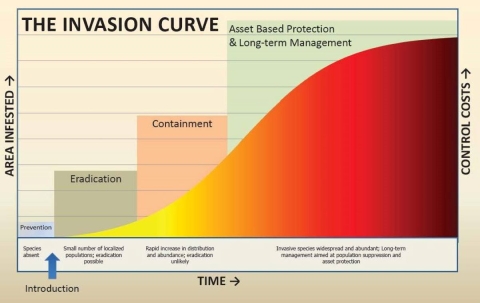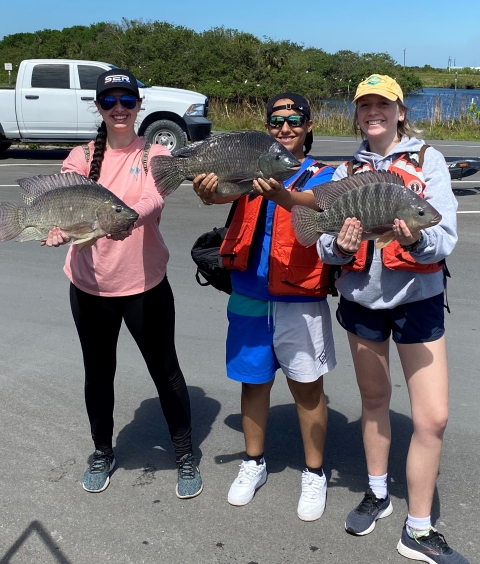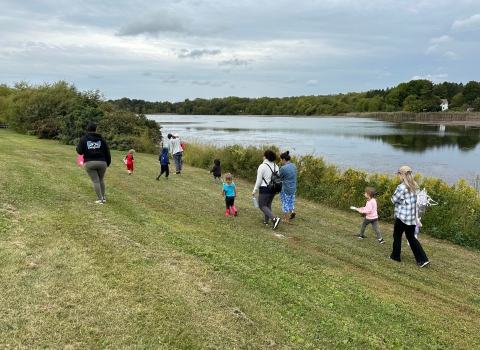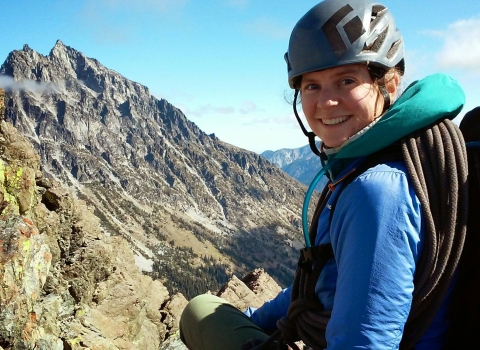To those of us already living in Florida it is no mystery why the state is ranked “the fastest growing in the nation” in 2021-2022. The tropical climate provides for endless summers, year-round growing seasons offer lush green landscapes and abundant food sources, and for some environmental enthusiasts the biodiversity affords recreation opportunities galore. The seemingly endless amounts of flora and fauna are here for many of the same reasons as the people, and like the human population the list of non-native invasive species invasive species
An invasive species is any plant or animal that has spread or been introduced into a new area where they are, or could, cause harm to the environment, economy, or human, animal, or plant health. Their unwelcome presence can destroy ecosystems and cost millions of dollars.
Learn more about invasive species arriving and thriving in Florida keeps growing.
The unique tropical climate and wealth of food sources has allowed Florida to become the nation’s top hot spot for invasive species, with now over 500 calling Florida home. The occurrence of these species is harmful to agricultural and tourism industries, native plants and animals, and to human health and quality of life. Controlling these invasive species is an extremely difficult task, especially since many go unnoticed by the public and land managers alike; and the negative impacts may not be seen for 10 or even 20 plus years after introduction.
People can easily see the invasive cane toads in their yards after one of the many South Florida rainstorms, green iguanas lining the banks of local canals or feasting on home-grown kale and collard greens,or the brightly colored red-headed rock agamas sunbathing and running around one of the many strip-mall parking lots, dodging cars with ease. These invasive critters have become a normal part of our day to day. What the public might not see is the invasion of the aquatic realm. The African jewelfish eating scores of native fish and their young, the Orinoco sailfin catfish burrowing into canal banks compromising bank integrity and causing negative impacts on water quality, or Asian swamp eels devastating small fish and native crayfish populations in the Everglades effectively upending the food web. As noted, dealing with invasive species isn’t easy and the Region 4 Fish and Aquatic Conservation (FAC) Program in South Florida has a challenging task of detection and control of invasive species in the aquatic world.
Invasive species managers use an “invasion curve” to help better understand a species current invasion status and how to best approach management of the invasion. Species are placed in one of four management categories: prevention, eradication, containment, and resource protection or long-term management.
1. Prevention: When a species is not present, prevention is still possible, this is the most cost-effective solution for managing invasive species where public awareness and cooperation is essential
2. Eradication: The eradication stage is only possible if a species is limited to a small number of localized populations, early detection and rapid response is critical for a successful eradication.
3. Containment: The containment category is aimed at reducing further spread of an introduced species. As populations increase, eradication becomes unlikely and management priorities shift to preventing further spread.
4. Resource Protection: Lastly, the all too familiar, long-term management which is the costliest stage of invasive species management. Eradication at this stage is unlikely to impossible, and instead the focus is on limiting populations and protecting resources.
The biggest and most important impact that managers can make in the fight against aquatic invasive species (AIS) is in the early stages of an invasion, prevention and eradication. Because of this the Peninsular Florida Fish and Wildlife Conservation Office (FWCO) focuses their efforts on outreach and early detection monitoring (EDM). Most importantly the Peninsular Florida FWCO staff knows that one group cannot fight this fight on their own. To enhance the possibility of prevention, outreach is essential. Providing the public with the information it needs to understand the problem, be situationally aware, and be onboard to help is the goal. Having limited budgets and time, different approaches of outreach and education must be explored to effectively reach the largest portion of the public possible. Attending schools and outreach events, supporting signage and checkpoints, promoting reporting tools such as apps and websites, and taking part in invasive fishing derbies are just a few of the ways the Region 4 FAC offices approach this effort. Yet unfortunately, it is not enough. Still many AIS literally slip through the cracks and make a new home in one of Florida’s many waterways. This is why EDM is so important. Although with over 11 million acres of freshwater and thousands of miles of interconnected canals, actually detecting the new and unknown AIS early in its introduction is extremely difficult. The who, what, when, where, how, and why of the next introduced species is unknown. Being in the right spot with the appropriate survey equipment to collect an unknown AIS early in its introduction seems less likely than winning the lottery. This is why one group cannot fight this fight alone, it takes a village.
Teaming up with multiple governmental agencies, nonprofit organizations, and universities to form Cooperative Invasive Species Management Areas (CISMA) is one way Region 4 FAC offices work as a “village” to combat AIS issues. Partnering with tribal nations on projects like the Miccosukee Tribe of Indians of Florida’s “Removal of the Swamp Invaders Fishing Tournament” which engages the tribal members and local public alike to catch, remove, and report sightings of AIS on tribal lands helps to build the number of stakeholders invested in this fight, while protecting Tribal resources. Joining federal, state, non-profit, and university partners at the bi-annual Non-Native Fish Slams aids in EDM by getting 50+ biologists together twice a year to survey areas of Florida where high numbers of introduced AIS are known. While actively sharing information, techniques, and new survey methods with the “village” helps all stay alert and on the forefront of AIS control. Although these efforts along with many others continue, the list of new AIS continues to grow. New innovative ideas and techniques for the detection and eradication of AIS coupled with more expansive outreach and education to aid in prevention need explored and tested. Continued cooperation and communication between all stakeholders is imperative as we are all in this fight together and need to act as a “village” to turn the tide on aquatic invasive species.


